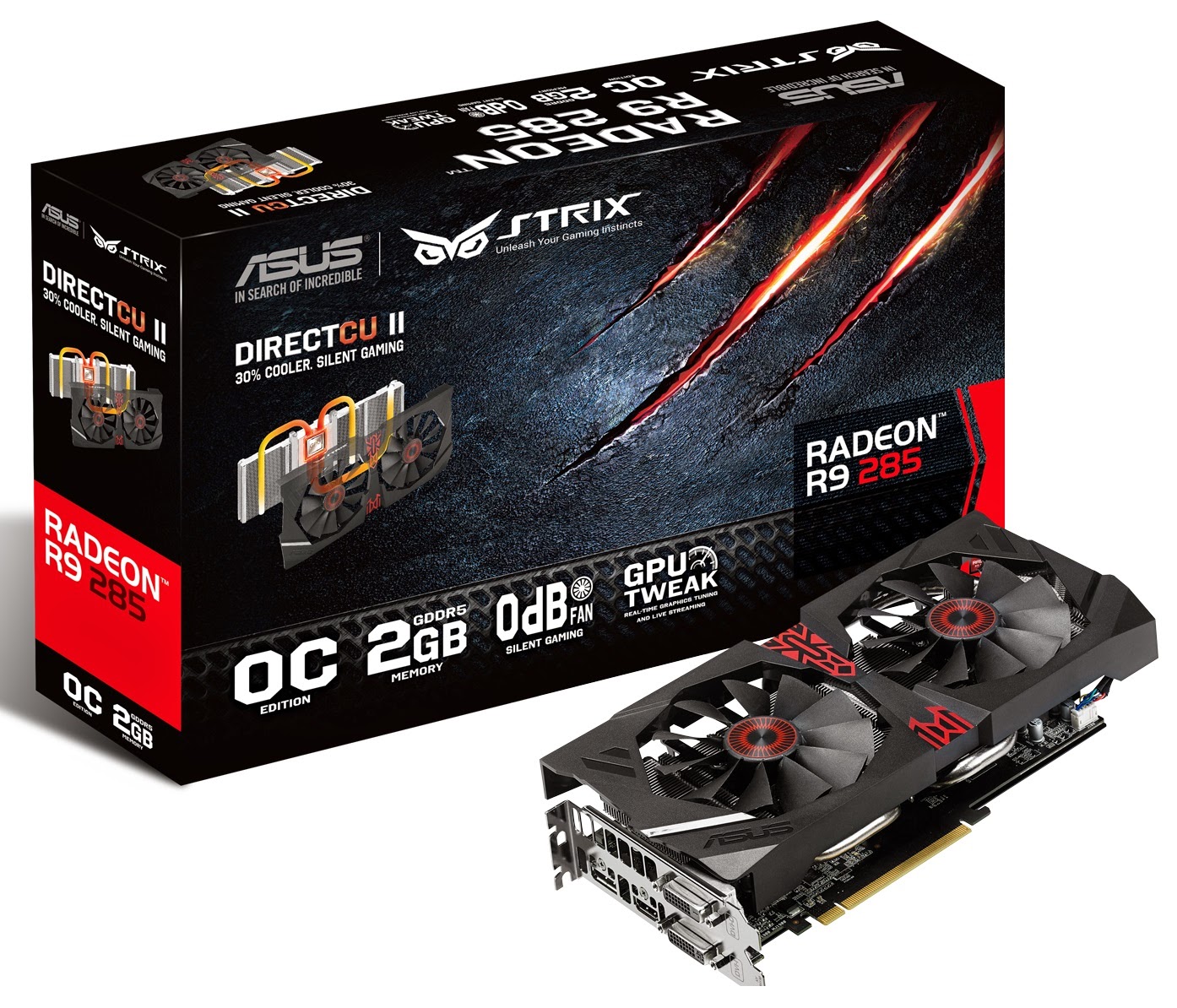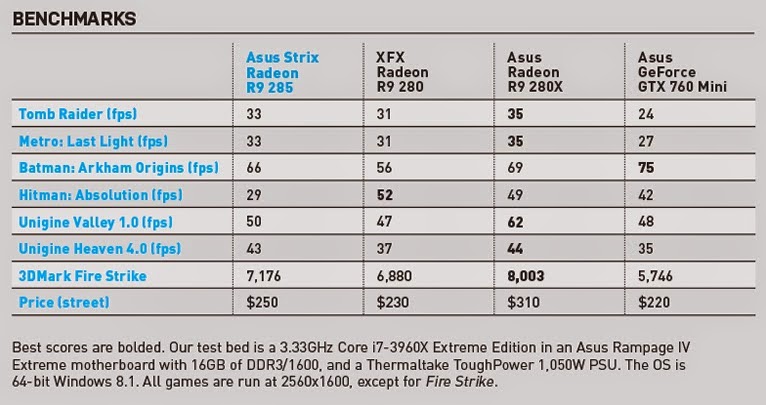When you buy into the stock market, experts tell you to diversify your portfolio. PC hardware manufacturers take the same approach. The R9 285 is AMD's latest investment, fitting in between its older 280 and 280X in performance and price. It has two gigabytes of onboard memory while the other two have three, but as long as your display isn't higher resolution than 1080p, that shouldn’t be an issue. Its TDP also comes in under 200 wattts, 10 less than the 280, so it makes more efficient use of the juice. But the 285's main competition is actually the NVIDIA GeForce GTX 760, a card released in the summer of 2013. AMD's had cards above and below the 760, but it didn't have one directly in the crosshairs until now.
During its marketing campaign, AMD made a lot of hay about the 285's performance in the popular 3DMark benchmark. And it does decisively outperform NVIDIA's offering in this particular tier. But 3DMark emphasizes a score instead of the number of frames the card is generating every second (which itself is not an ideal barometer, but that's a story for another time). It's four- and five-digit results can also make differences look larger than they are. So we threw a bunch of games at it that had built-in benchmarks, such as the Tomb Raider reboot, Metro Last Light, and Hitman: Absolution. That last one behaved a little quirky (we chalked it up to beta drivers), but the other games in this arena demonstrated that the R9 285 was the new sheriff in town. This version from ASUS is actually on the high-end of the price spectrum, but it's not without its charms.
Hardware doesn’t tell the whole story, though. NVIDIA has a pretty slick software package with lots of settings and tweaks explained in plain English. You can use GeForce Experience (GFE) to optimize game performance with one click, and to make videos of your gaming adventures. It'll also tell you when new drivers are ready to be downloaded and will streamline their installation.
Until recently, AMD had only the Catalyst Control Panel, which worked well enough for manual performance settings. But now they've produced a competitor to GFE called Gaming Evolved. It has one-click optimization, video recording, and driver notifications, too. You can also earn credit card–like reward points for free games and other stuff. Speaking of free games, AMD regularly bundles several with its cards these days. When this card launched, retailers were offering copies of Alien: Isolation, Star Citizen, Sleeping Dogs, and a number of other titles to choose from, changing on a roughly monthly basis. NVIDIA started offering bundles, but your options aren't nearly as varied.
But let's talk about this ASUS version of the 285 in particular. Like we said, it has its charms. When you’re not gaming or otherwise stressing the GPU, only one of its two fans will even spin up, and that doesn't start until the graphics processing unit (GPU) hits 62 Celsius. During benchmarking, the GPU didn’t get past 72C, and it didn't have to push its fans that hard. In fact, we barely ever heard them. This is also with ASUS increasing the baseline speed of the GPU from 918MHz to 954Mhz. This “Tonga” generation of AMD GPUs simply doesn't generate enough heat to require noisy fans.
The card’s metal shroud around the fans probably also helps keep things cool. Sometimes this element is made of plastic to cut costs, and it doesn't transmit heat as efficiently. Metal adds weight, but ASUS pre-installs a backplate as well, which reinforces the Strix 285 to prevent it from sagging (and it makes the back look nice). This card is also taller than most, though, so the part where the card screws into the case can be one of those hard-to-reach places. We recommend wielding a screwdriver with a magnetic tip.
NVIDIA's GTX 970 and 980 cards are exciting, but they don’t compete in this price range. The GTX 970 (the less expensive of the two) comes in around $350. You may be able to find a Radeon R9 290 getting down near the $250 price point, where it becomes the superior choice, but they're elusive. The Radeon R9 285 is pretty much the king of the $200–$250 range.


.bmp)
No comments:
Post a Comment